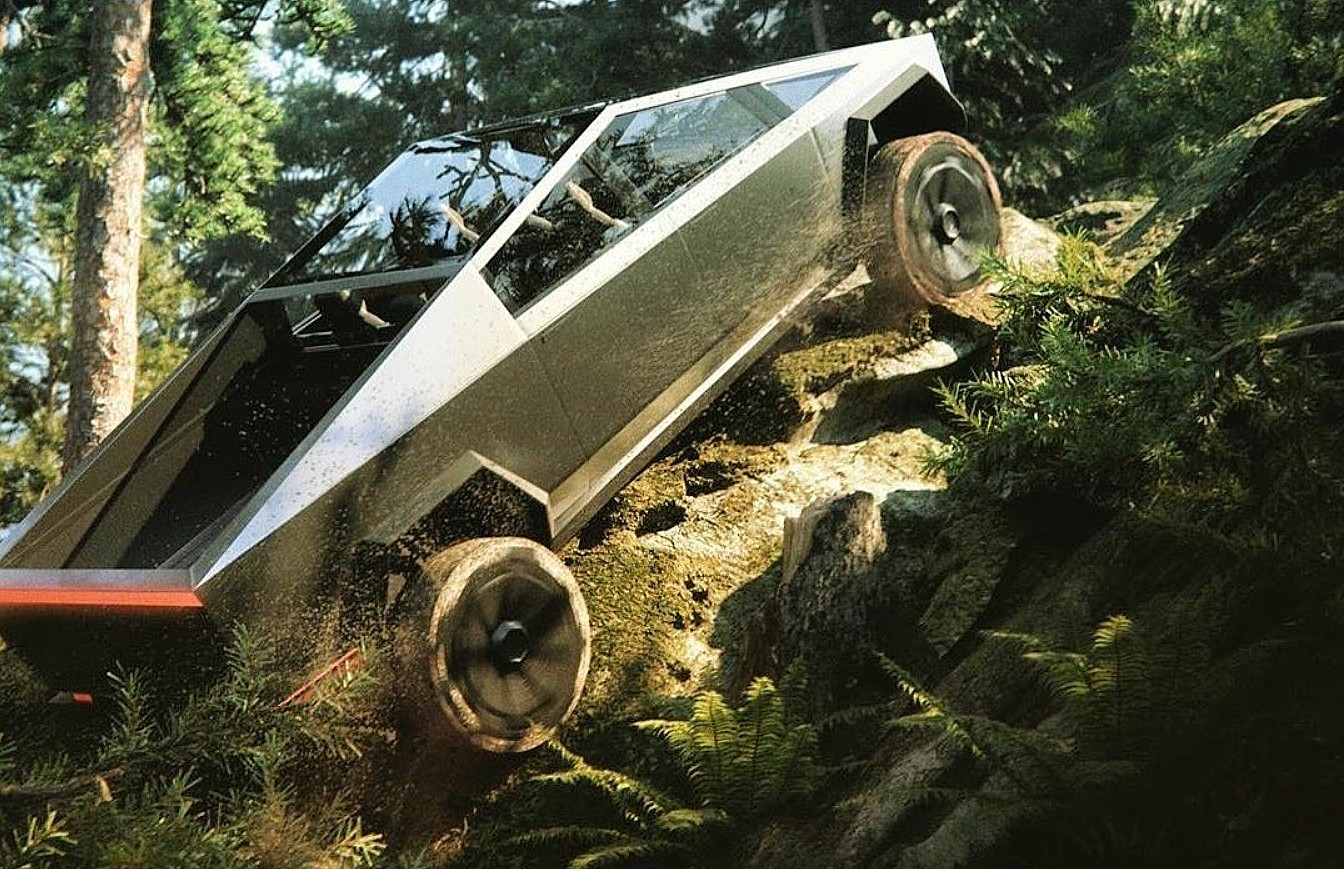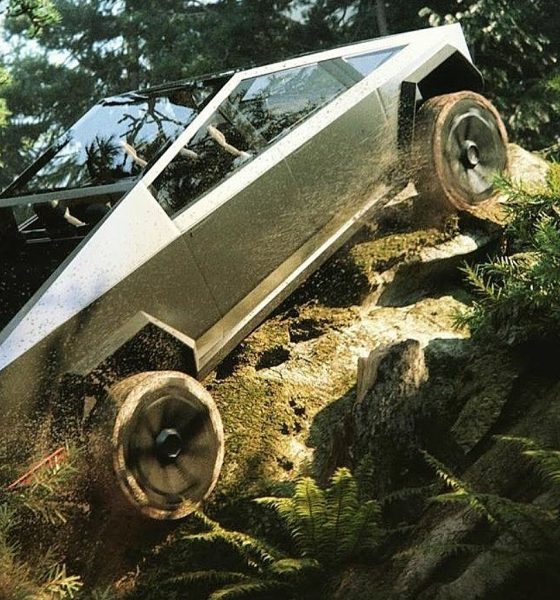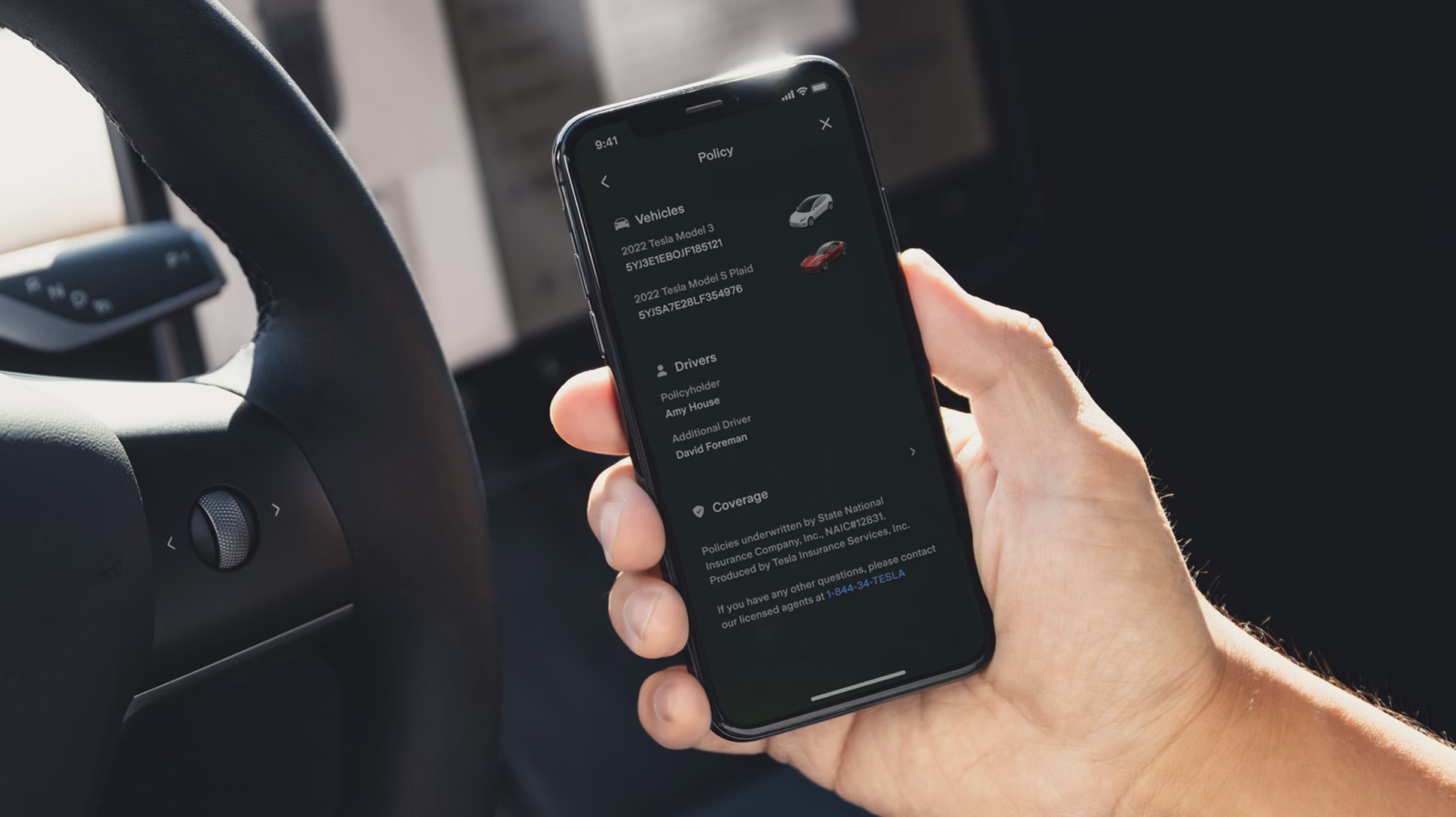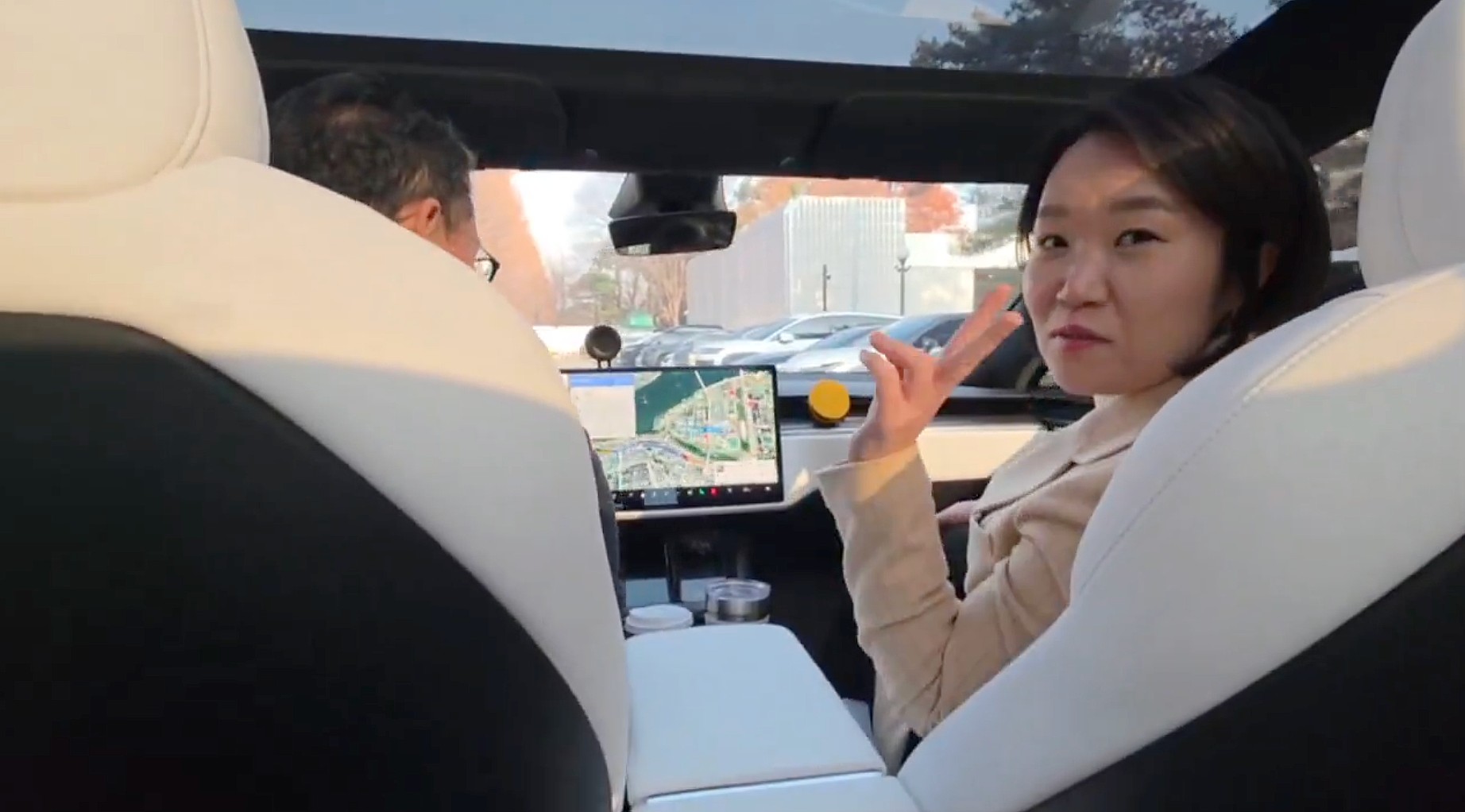

News
Tesla Cybertruck isn’t better than 1949 technology when it comes to off-roading, says popular Trucking channel
The Tesla Cybertruck is, without a doubt, one of the most discussed vehicles in recent memory. The pickup’s polarizing and robust design has vehicle fanatics raving about the possibility of changing the tune of the American truck market today. In a recently published video from The Fast Lane Car YouTube channel, the team discussed why they believe the Cybertruck will fail to be an effective mode of off-road transportation. They highlight its heavy-weight and low-body design as two of the reasons it will fall short of impressively navigating through rocks and trails.
“If you look at what you need for off-road ability, you need ground clearance, you need gearing, you need articulation, you need underbody protection, right?” The trucking experts add, “If you look at the off-road tech, the stuff that you needed back in 1949 is the stuff you still need in 2020-2021.”
Typically, offroading vehicles that find success in challenging terrain have short wheelbase are lightweight and tend to told hold higher-than-normal ground clearances that assist in traveling over sharp crests on trails. TFL’s Tommy Mica highlights these attributes during the video, stating that an offroading vehicle’s biggest enemy is weight.
“Just like on-road, the enemy to off-road is weight. The lighter the weight, the easier it is to crawl up obstacles to maneuver difficult situations. The Cybertruck is going to be huge and is going to be monstrously heavy,” Mica says.
While it is ideal to have a lighter vehicle for offroading situations, that does not mean a heavy car will have issues 100% of the time. In fact, there are many vehicles that hold a weight that is similar to the Cybertruck’s estimated 5,000-6,500 pound curb rating. One is the 2019 Ford F-150 Raptor, a truck that was recognized by Popular Mechanics as one of the top 12 best off-road vehicles available. Weighing in at over 5,500 pounds, the Raptor has been spotted climbing intimidating stretches of steep offroading trails without much of an issue.
Additionally, Mica states that the Cybertruck’s low ground clearance will inhibit the vehicle’s ability to navigate over steep land grades and sharp objects on a trail. However, the Cybertruck’s 16″ ground clearance is higher than the 8.7″ measurement of the top-ranked 2019 Ram 1500 Rebel from Dodge and the previously mentioned F-150 Raptor’s 11.5″ clearance.
TFL tested a Long-Range configuration of the Model X in its off-road tests. Citing a diminished loss of range due to increased power usage, and increased worry over puncturing the vehicles underbody battery pack made their experience not-so-memorable. However, the Model X was never aimed toward off-road performance specifically. While the electric SUV does have traction control capabilities that have performed well on off-road courses in the past, the Model X was not meant for navigating through vicious trails of rocks, branches, and uneven terrain.
Even so, using the Model X’s performance as an off-road vehicle as the basis to prove the Cybertruck’s inability to function on trails just seems silly. The two cars maintain entirely different packages. Comparing a Ford Escape’s off-road performance to the F-150 Raptor’s wouldn’t be justifiable either, as the two vehicles are completely different and aimed toward different functions.
Besides, Tesla CEO Elon Musk has stated that the Cybertruck’s size and dimensions are not finalized. In early December 2019, Musk said the width and length would both be revised to fit inside a residential garage. “We can prob reduce width by an inch & maybe reduce length by 6+ inches without losing on utility or aesthetics,” Musk said.
The Cybertruck’s off-road performance won’t be solidified until the release of its Dual and Tri motor variants in 2021. However, there is plenty of evidence to suggest that the electric truck will be more than capable of holding its own in tight terrain, especially considering its most powerful variant packs a tremendous punch.
Watch The Fast Lane Car’s video mentioning the Cybertruck’s offroading ability below.

News
Tesla dominates in the UK with Model Y and Model 3 leading the way

Tesla is dominating in the United Kingdom so far through 2025, and with about two weeks left in the year, the Model Y and Model 3 are leading the way.
The Model Y and Model 3 are the two best-selling electric vehicles in the United Kingdom, which is comprised of England, Scotland, Wales, and Northern Ireland, and it’s not particularly close.
According to data gathered by EU-EVs, the Model Y is sitting at 18,890 units for the year, while the Model 3 is slightly behind with 16,361 sales for the year so far.
The next best-selling EV is the Audi Q4 e-tron at 10,287 units, lagging significantly behind but ahead of other models like the BMW i4 and the Audi Q6 e-tron.
GOOD NEWS 🇬🇧 Tesla is absolutely crushing the UK electric vehicle market in 2025 💥
The numbers are in, and the dominance is clear. With an impressive amount of 42,270 vehicles delivered year-to-date, the brand now commands a solid 9.6% market share of the total auto market 🆒… pic.twitter.com/dkiGX9kzd0
— Ming (@tslaming) December 18, 2025
The Model Y has tasted significant success in the global market, but it has dominated in large markets like Europe and the United States.
For years, it’s been a car that has fit the bill of exactly what consumers need: a perfect combination of luxury, space, and sustainability.
Both vehicles are going to see decreases in sales compared to 2024; the Model Y was the best-selling car last year, but it sold 32,610 units in the UK. Meanwhile, the Model 3 had reached 17,272 units, which will keep it right on par with last year.
Tesla sold 50,090 units in the market last year, and it’s about 8,000 units shy of last year’s pace. It also had a stronger market share last year with 13.2 percent of the sales in the market. With two weeks left in 2025, Tesla has a 9.6 percent market share, leading Volkswagen with 8 percent.
The company likely felt some impact from CEO Elon Musk’s involvement with the Trump administration and, more specifically, his role with DOGE. However, it is worth mentioning that some months saw stronger consumer demand than others. For example, sales were up over 20 percent in February. A 14 percent increase followed this in June.
News
Tesla Insurance officially expands to new U.S. state
Tesla’s in-house Insurance program first launched back in late 2019, offering a new way to insure the vehicles that was potentially less expensive and could alleviate a lot of the issues people had with claims, as the company could assess and repair the damage itself.

Tesla Insurance has officially expanded to a new U.S. state, its thirteenth since its launch in 2019.
Tesla has confirmed that its in-house Insurance program has officially made its way to Florida, just two months after the company filed to update its Private Passenger Auto program in the state. It had tried to offer its insurance program to drivers in the state back in 2022, but its launch did not happen.
Instead, Tesla refiled the paperwork back in mid-October, which essentially was the move toward initiating the offering this month.
BREAKING: Tesla Insurance has just officially launched in Florida.
This is the first new state to receive @Tesla Insurance in more than 3 years. In total, Tesla insurance is now available in 13 U.S. states (map in thread below of all the states).
Tesla Insurance in Florida uses… pic.twitter.com/bDwh1IV6gD
— Sawyer Merritt (@SawyerMerritt) December 17, 2025
Tesla’s in-house Insurance program first launched back in late 2019, offering a new way to insure the vehicles that was potentially less expensive and could alleviate a lot of the issues people had with claims, as the company could assess and repair the damage itself.
It has expanded to new states since 2019, but Florida presents a particularly interesting challenge for Tesla, as the company’s entry into the state is particularly noteworthy given its unique insurance landscape, characterized by high premiums due to frequent natural disasters, dense traffic, and a no-fault system.
Annual average premiums for Florida drivers hover around $4,000 per year, well above the national average. Tesla’s insurance program could disrupt this, especially for EV enthusiasts. The state’s growing EV adoption, fueled by incentives and infrastructure development, aligns perfectly with Tesla’s ecosystem.
Moreover, there are more ways to have cars repaired, and features like comprehensive coverage for battery damage and roadside assistance tailored to EVs address those common painpoints that owners have.
However, there are some challenges that still remain. Florida’s susceptibility to hurricanes raises questions about how Tesla will handle claims during disasters.
Looking ahead, Tesla’s expansion of its insurance program signals the company’s ambition to continue vertically integrating its services, including coverage of its vehicles. Reducing dependency on third-party insurers only makes things simpler for the company’s automotive division, as well as for its customers.
News
Tesla Full Self-Driving gets sparkling review from South Korean politician
“Having already ridden in an unmanned robotaxi, the novelty wasn’t as strong for me, but it drives just as well as most people do. It already feels like a completed technology, which gives me a lot to think about.”

Tesla Full Self-Driving got its first sparkling review from South Korean politician Lee So-young, a member of the country’s National Assembly, earlier this week.
Lee is a member of the Strategy and Finance Committee in South Korea and is a proponent of sustainable technologies and their applications in both residential and commercial settings. For the first time, Lee was able to utilize Tesla’s Full Self-Driving technology as it launched in the country in late November.
Her thoughts on the suite were complimentary to the suite, stating that “it drives just as well as most people do,” and that “it already feels like a completed technology.”
드디어 오늘, 서울에서 테슬라 FSD 체험 했습니다.
JiDal Papa님의 모델S 협찬에 힘입어^^ 파파님 정말 감사합니다.
국회 -> 망원시장 -> 홍익대 -> 국회 복귀 코스였고요.
이미 무인 로보택시를 타봐서 그런지 신기함은
덜했지만, 웬만한 사람만큼 운전을 잘하네요.이미 완성된 기술이라고… pic.twitter.com/8pAidHBpRG
— 이소영 국회의원 (Soyoung Lee) (@im_soyounglee) December 17, 2025
Her translated post says:
“Finally, today I got to experience Tesla FSD in Seoul. Thanks to the Model S sponsored by JiDal Papa^^, I’m truly grateful to Papa. The route was from the National Assembly -> Mangwon Market -> Hongik University -> back to the National Assembly. Having already ridden in an unmanned robotaxi, the novelty wasn’t as strong for me, but it drives just as well as most people do. It already feels like a completed technology, which gives me a lot to think about. Once it actually spreads into widespread use, I feel like our daily lives are going to change a lot. Even I, with my license gathering dust in a drawer, don’t see much reason to learn to drive a manual anymore.”
Tesla Full Self-Driving officially landed in South Korea in late November, with the initial launch being one of Tesla’s most recent, v14.1.4.
It marked the seventh country in which Tesla was able to enable the driver assistance suite, following the United States, Puerto Rico, Canada, China, Mexico, Australia, and New Zealand.
It is important to see politicians and figures in power try new technologies, especially ones that are widely popular in other regions of the world and could potentially revolutionize how people travel globally.








